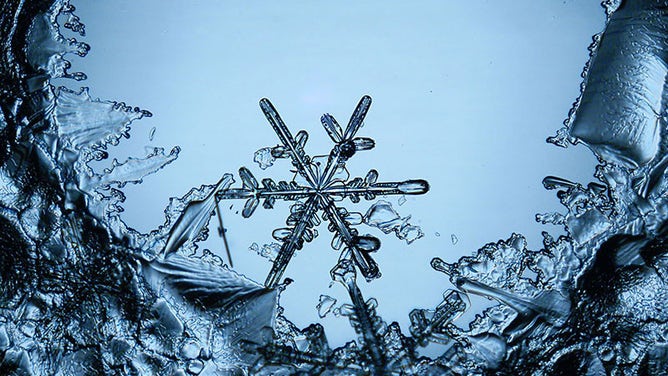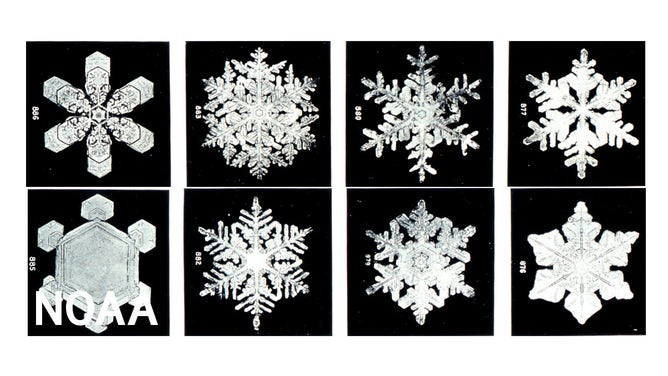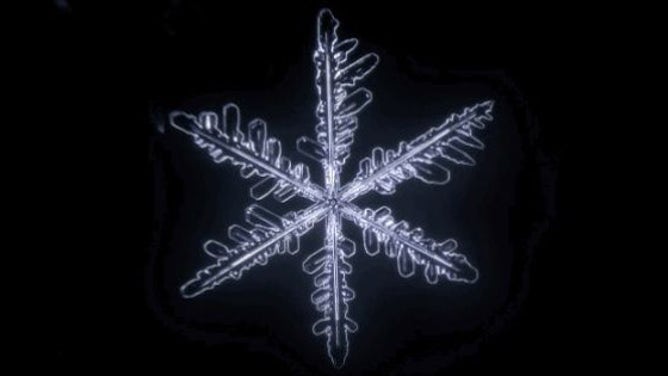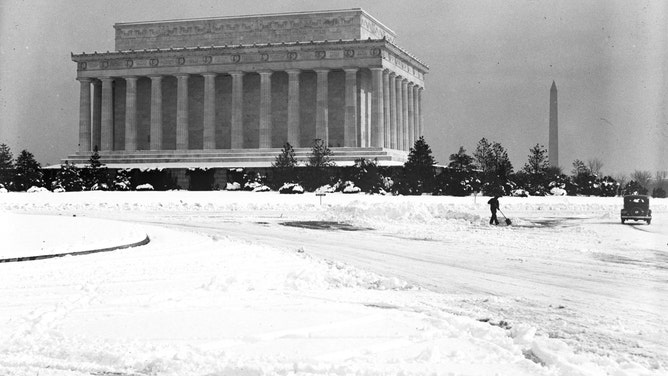7 facts about snow
It’s possible for snow to fall with temperatures as high as 50 degrees
7 facts about snow
Here’s a list of seven facts you may not know about the most common type of winter precipitation.
Snow might be an inconvenience for some, but for others, the sight of snow is purely magical – from skiing and snowboarding to building a snowman, or simply the joy of having an extra day off from school.
Here’s a list of seven facts you may not know about the most common type of winter precipitation.
1. There must be pollen or dust in the air to form snow
The first step in the formation of a snowflake is an extremely cold water droplet freezing onto a pollen or dust particle in the sky. This creates an ice crystal.
Then, water vapor freezes onto the primary ice crystal as it descends toward the ground, which builds new crystals – the six sides of the snowflake.
2. All snowflakes have 6 sides or arms
A snowflake is made of frozen water, so it has two hydrogen atoms and one oxygen atom (H2O). Water molecules are shaped like a V, so when they align and freeze together, a hexagon shape develops.
When more water molecules are added to a snowflake, they are evenly added to the hexagon, so the shape does not change. Instead, the snowflake increases in size while maintaining its six sides.

(U.K. Met Office)
3. No two snowflakes are exactly alike
Each snowflake follows a slightly different path from the sky to the ground, and therefore, encounters slightly different atmospheric conditions on the way down.
Therefore, every flake tends to look unique, resembling everything from prisms and needles to the familiar lacy pattern, according to the National Weather Service.

Microscopic view of snowflakes by Wilson Bentley, from the Annual Summary of the Monthly Weather Review for 1902. Bentley was a farmer whose hobby was photographing snow flakes.
(NOAA Photo Library archives, Weather Wonders collection, photolib.noaa.gov)
4. Snow can fall with temperatures above freezing
It’s possible for snow to fall with temperatures at the surface as high as 50 degrees, but only if environmental conditions are just right.
This can happen if the warm layer of air near the surface is very shallow, so the snowflakes falling from the clouds don’t have enough time to melt before reaching the ground.
When it snows with temperatures above freezing, the temperature will drop. If the snow is falling heavily, the temperature will quickly drop to near 32 degrees. This is due to evaporation and melting, both cooling processes.
The best chance of seeing a 50-degree snow is when the air is very dry and the snow is quite heavy because more evaporation will take place within that dry air.

(U.K. Met Office)
5. It can never be too cold for snow
Although it can technically snow at temperatures up to 50 degrees, it’s simply too warm for snow to reach the ground with temperatures any higher than that.
But it can never be too cold for snow. Whether it’s 30 below or 30 above zero, there’s a chance it could snow.
THESE ARE THE 7 SNOWIEST CITIES IN THE U.S.

(Photo by Markus Winkler on Unsplash)
6. Snow isn’t white
Snow might appear white as it falls from the clouds or accumulates on the ground, but it’s actually translucent. That’s because snow is comprised of tiny ice crystals, which are also translucent.
Light is bent when passing through a translucent material, so when light hits a snowflake, it is bent and scattered across the visible light spectrum by the facets and imperfections in each crystal, according to ScienceNotes.org.
The scattering results in white light, similar to the way a pile of sugar or salt appears white even though each individual crystal appears clear, ScienceNotes.org said.

Lincoln Memorial and Washington Memorial in snow ca. 1934.
(HUM Images / Universal Images Group / Getty Images)
7. It takes about 1 hour for a snowflake to reach the ground
Although it depends on each snowflake’s size and mass and the surrounding environmental conditions, most flakes fall at speeds of 1 to 4 mph, according to the United Kingdom’s Met Office.
The largest, heaviest snowflakes can reach speeds up to 9 mph, but the typical flake descends toward the ground at about 1.5 mph and takes around an hour to reach the ground, the Met Office said.
